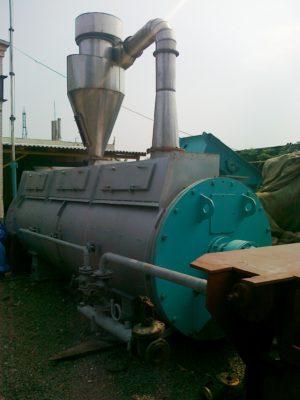Turning Waste into Feed Flour: Revolutionizing Agriculture
In the face of burgeoning global populations and escalating environmental concerns, the quest for sustainable solutions has become paramount. Among the myriad challenges is the efficient management of waste, particularly in the agricultural sector. Traditional waste disposal methods, such as landfilling and incineration, not only contribute to environmental degradation but also squander valuable resources. However, a promising innovation has emerged: the conversion of waste into feed flour. This revolutionary approach not only mitigates waste-related issues but also addresses the pressing need for alternative sources of animal feed, thereby fostering a more sustainable agricultural ecosystem.
The Problem of Agricultural Waste
Agricultural activities generate a substantial amount of organic waste, including crop residues, food processing by-products, and animal manure. Improper management of this waste can lead to various environmental issues such as soil degradation, water contamination, and greenhouse gas emissions. Moreover, the disposal of agricultural waste poses economic challenges for farmers, who must contend with rising costs associated with waste disposal.
The Rise of Feed Flour
Feed flour, also known as feed meal or feed pellet, is produced by processing various organic materials into a nutrient-rich powder suitable for animal consumption. While conventional feed sources like grains and soybean meal remain prevalent, the utilization of waste-derived feed flour offers several advantages:
- Resource Utilization: Waste materials that would otherwise be discarded can be repurposed into valuable feed ingredients, reducing reliance on finite resources.
- Nutritional Value: Depending on the composition of the feedstock, feed flour can provide a diverse array of nutrients essential for animal health and growth.
- Cost-Effectiveness: Producing feed flour from waste materials can be more economical than purchasing conventional feed ingredients, offering potential cost savings for farmers.
Equipment for Processing Waste into Feed Flour
The process of converting agricultural waste into feed flour typically involves several stages, including collection, preprocessing, drying, grinding, and pelletizing. Various types of equipment are employed at each stage to ensure efficiency and product quality:
- Shredders and Chippers: These machines are used to break down bulky agricultural waste materials such as crop residues and woody biomass into smaller, more manageable pieces.
- Dryers: Moisture content plays a crucial role in the quality and shelf life of feed flour. Dryers are utilized to reduce the moisture content of the feedstock to an optimal level, preventing microbial growth and ensuring stability during storage.
- Grinders and Hammer Mills: These devices pulverize dried organic materials into fine particles, facilitating the extraction of nutrients and improving digestibility for animals.
- Pellet Mills: Pelletization is a common method for producing feed flour, as it enhances feed quality, palatability, and ease of handling. Pellet mills compress finely ground feed ingredients into compact pellets of uniform size and shape.
Environmental and Economic Benefits
The adoption of equipment for processing waste into feed flour offers a multitude of environmental and economic benefits:
- Waste Reduction: By diverting agricultural waste from landfills and incinerators, the production of feed flour contributes to waste reduction and mitigates environmental pollution.
- Resource Conservation: Repurposing waste materials into feed ingredients conserves valuable resources such as water, energy, and land, promoting sustainable agricultural practices.
- Income Diversification: For farmers and agribusinesses, the production of feed flour can serve as an additional revenue stream, enhancing financial resilience and viability.
- Climate Mitigation: Utilizing waste-derived feed ingredients can help mitigate greenhouse gas emissions associated with conventional feed production, thereby contributing to climate change mitigation efforts.
Conclusion
The utilization of equipment for processing waste into feed flour represents a paradigm shift in agricultural sustainability. By harnessing the latent value of agricultural waste, this innovative approach offers a viable solution to the dual challenges of waste management and animal feed production. As the demand for sustainable agricultural practices continues to grow, the adoption of waste-to-feed technologies is poised to play a pivotal role in shaping the future of food production. Through collaboration between researchers, policymakers, and industry stakeholders, we can realize the full potential of this transformative technology and build a more resilient and sustainable agricultural ecosystem for generations to come.








